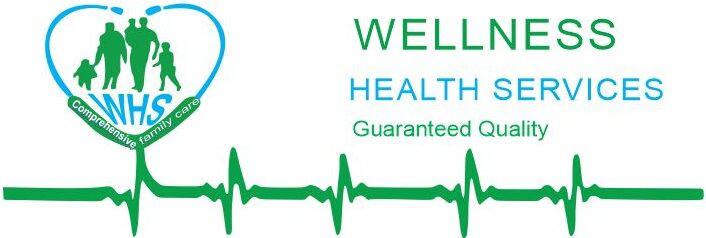🌟
“Pain is not just a symptom — it’s a story your body tells during the battle against cancer.”
But the good news is this: you don’t have to suffer in silence.
Modern cancer care has evolved. Today, managing pain and side effects is not just possible — it’s a critical part of healing.
💬 The Hidden Side of Cancer Treatment
Every cancer journey comes with its physical and emotional challenges — fatigue, nausea, nerve pain, muscle aches, and more. For many, these side effects feel as relentless as the disease itself.
Yet, studies show that over 50% of cancer patients experience undertreated pain, often due to fear of addiction, lack of assessment, or limited access to palliative care .
The truth? With the right combination of therapies — medical, psychological, and spiritual — pain can be controlled, and quality of life can be restored.
💊 1. Understanding the Nature of Cancer Pain
Pain during cancer can arise from:
- The tumor itself — pressing on nerves, bones, or organs.
- Treatments — chemotherapy-induced neuropathy, radiation burns, or post-surgical pain.
- Other conditions — infections, fatigue, anxiety, or muscle strain.
That’s why doctors now emphasize comprehensive pain assessment — understanding the type, cause, and impact of pain — before choosing treatment .
⚙️ 2. Medical Approaches: The WHO Pain Ladder Still Works
The World Health Organization’s three-step analgesic ladder remains a cornerstone of cancer pain control :
- Mild pain → Non-opioids (paracetamol, NSAIDs)
- Moderate pain → Weak opioids (codeine, tramadol)
- Severe pain → Strong opioids (morphine, oxycodone, fentanyl)
This stepwise approach allows escalation only when needed.
Modern evidence supports opioid rotation (switching between opioids) and adjuvant medications (antidepressants, anticonvulsants, corticosteroids) to enhance comfort and reduce side effects .
💡 3. Interventional & Advanced Pain Control
When medicines alone don’t suffice, doctors may use nerve blocks, epidural analgesia, or intrathecal pumps to deliver pain relief directly where it’s needed .
These advanced options can reduce reliance on systemic opioids — easing symptoms like nausea, sedation, or constipation — and improve quality of life.
🌱 4. Managing Other Common Side Effects
| Symptom | What Helps (Evidence-Based) |
| Nausea & Vomiting | Antiemetics (ondansetron, metoclopramide), ginger tea, small frequent meals |
| Fatigue | Gentle exercise, hydration, sleep hygiene, iron correction if anemic |
| Neuropathy | Vitamin B complex, gabapentin, acupuncture, dose adjustment of chemotherapy |
| Mouth Sores (Mucositis) | Oral rinses, soft foods, cryotherapy during chemo |
| Constipation (from opioids) | High-fiber diet, laxatives, hydration, stool softeners |
Each symptom deserves attention — because relief allows healing to continue uninterrupted.
🧘♀️ 5. The Power of Non-Drug Approaches
Pain is both physical and emotional. Evidence supports mind-body and supportive therapies as part of integrated care:
- Physiotherapy & gentle movement maintain mobility and reduce stiffness.
- Massage and acupuncture reduce pain perception and muscle tension .
- Cognitive behavioral therapy (CBT) and guided imagery ease fear and anxiety.
- Spiritual care offers meaning, courage, and inner peace during treatment .
❤️ 6. Communication & Compassion Are Medicine Too
No one should feel that pain is “part of cancer you must accept.”
Pain management requires teamwork — between oncologists, nurses, palliative care specialists, psychologists, and the patient’s family.
Open communication ensures that every ache is heard and every side effect addressed.
As the American Cancer Society notes:
“Effective pain control is not about eliminating all pain, but helping patients live fully despite it.”
🌅 Hope in Every Breath
Managing pain during cancer treatment is not just about medications — it’s about restoring dignity, control, and peace.
Every time we relieve a patient’s pain, we give them back the power to fight, to hope, and to live.
Because healing is not only in curing the disease — it’s also in caring for the person.
📚 References
- Paice JA et al. Managing Cancer Pain: A Review. CA Cancer J Clin. 2023.
- National Cancer Institute. Cancer Pain (PDQ®) – Health Professional Version. 2024.
- World Health Organization. Cancer Pain Relief: With a Guide to Opioid Availability. 2019.
- Caraceni A et al. ESMO Clinical Practice Guidelines for Cancer Pain Management. Ann Oncol. 2020.
- Fallon M et al. Optimal Pain Management for Patients with Cancer. CA Cancer J Clin. 2022.
- Cata JP et al. Interventional Pain Management in Cancer Patients: A Scoping Review. Ann Palliat Med. 2024.
- Navari RM. Management of Chemotherapy-Induced Nausea and Vomiting: Focus on Newer Agents. Drugs. 2021.
- Mustian KM et al. Exercise for Cancer-Related Fatigue: Evidence-Based Review. J Clin Oncol. 2017.
- Loprinzi CL et al. Chemotherapy-Induced Peripheral Neuropathy: Prevention and Treatment. J Clin Oncol. 2020.
- Peterson DE. Management of Oral Mucositis in Cancer Patients. Support Care Cancer. 2021.
- Fallon MT. Constipation in Cancer Patients: Pathophysiology and Management. Lancet Oncol. 2019.
- Lee JH et al. Massage Therapy for Cancer Pain: A Systematic Review and Meta-Analysis. J Pain Symptom Manage. 2021.
- Puchalski CM. Spirituality and Health: The Role of Compassionate Care in Healing. J Palliat Med. 2020.
- American Cancer Society. Pain Control: Support for People with Cancer. 2024.

